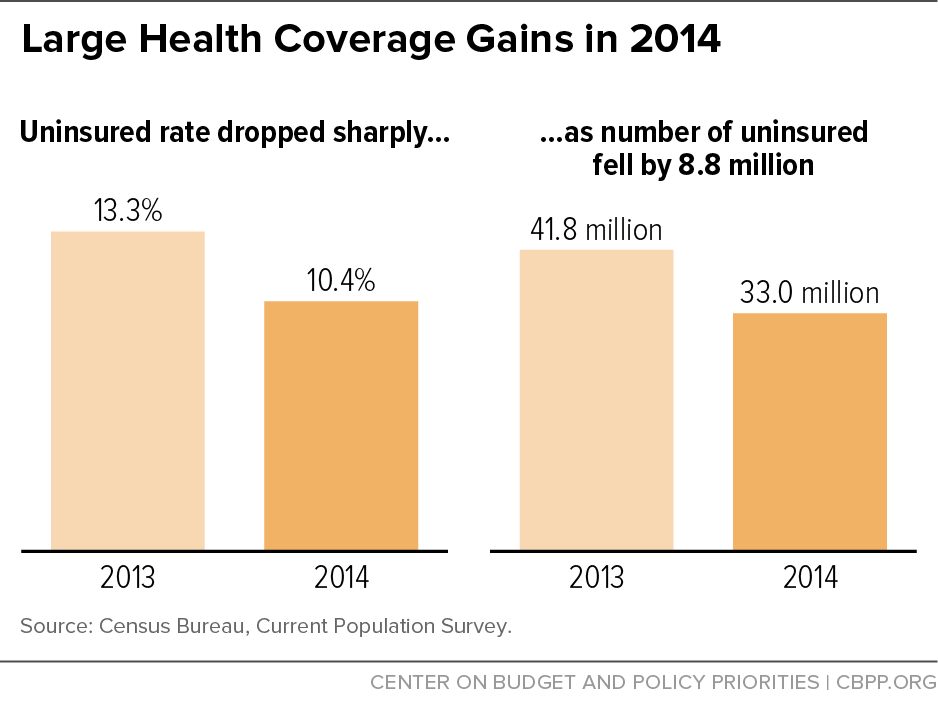BEYOND THE NUMBERS
The share of Americans who are uninsured fell sharply, from 13.3 percent in 2013 to 10.4 percent in 2014, new Census Bureau data show (see chart). The coverage gains reflect growth in both Medicaid and private health coverage, and they occurred across population groups. These are the first Census estimates showing the effects of health reform’s major coverage expansions, which took full effect on January 1, 2014. The Census Bureau’s Current Population Survey is considered the gold standard for national-level health coverage estimates.
The share of Americans enrolled in Medicaid rose from 17.5 percent in 2013 to 19.5 percent in 2014, while the share with private coverage rose from 64.1 percent to 66.0 percent. Thus, 2014 is the first year since 2000 in which both Medicaid and private coverage grew by statistically significant amounts. That’s because health reform expanded Medicaid to more low-income adults and it provides subsidies to help people with modest incomes purchase private coverage through the health insurance marketplaces.
The Census data cover a wide array of demographic categories, by gender, age, family income, working status, and race/ethnicity. The uninsured rate fell by at least one-eighth among every such group in 2014. Certain groups had especially large gains, including African Americans, non-elderly adults, and workers. For example, the share of African Americans without coverage fell by more than one-fourth in 2014, from 15.9 percent to 11.8 percent.
Today’s findings are consistent with those from the Centers for Disease Control and Prevention’s National Health Interview Survey (NHIS), as well as a number of private surveys, showing historic coverage gains in 2014.
These other surveys also show continued coverage gains in 2015. For example, the uninsured rate fell from 14.4 percent in 2013 to 11.5 percent in 2014, and to 9.2 percent in the first quarter of 2015, according to the most recent NHIS estimates.
A growing body of research highlights the significant short- and long-term benefits of health coverage, including improved access to health care providers and services, improved health, greater likelihood of preventive care and screenings, less financial hardship, and among children, improved educational outcomes.

